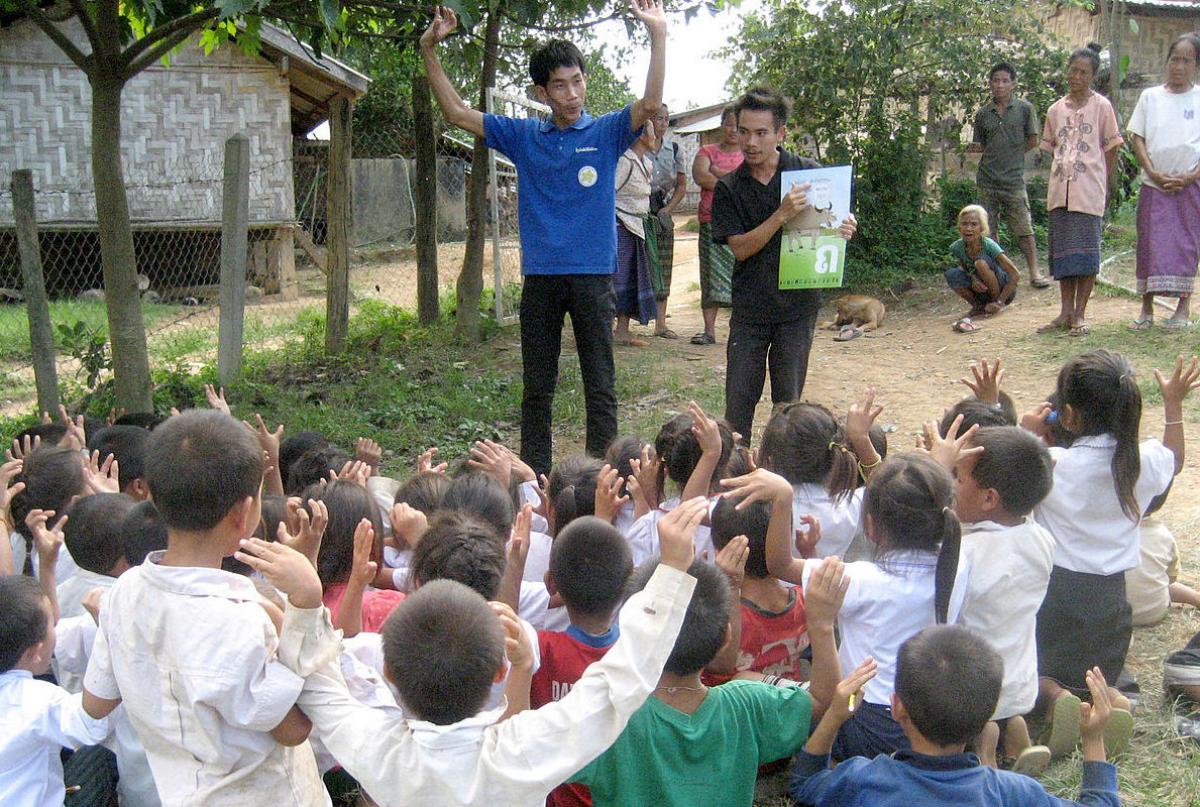Y: Hey Don, play charades with me for a minute. Guess what I'm doing.
D: You're holding something in your hands... you're moving your hand... are you petting a cat? Okay, you're shaking your head no. Now you're holding something up to your eye, you're... pressing a button? You're pointing to my mouth and smiling... does that mean I'm supposed to smile? Are you a photographer?
Y: Yes!
D: Great! I win! What do I get?
Y: I guess you get the first step to creating a sign language.
D: Is this how they start?
Y: Researchers think so. And, according to one study, it only takes five generations of learners for a pantomime to become a stable sign.
D: How did they find that out?
Y: Researchers taught an initial group of volunteers gestures for words in four categories: people, locations, objects, and actions. To start, a volunteer would act out a word like "photographer" with a lot of inefficient, inconsistent gestures, like I just did. Then that group was asked to demonstrate the gesture to another volunteer, who tried to guess its meaning by choosing from a set of answers. The next generation of volunteers were taught the gesture the previous volunteer had remembered and demonstrated. After a few generations, the signs became streamlined and more efficient, and even had a marker for category, like the signer pointing to themselves for a word in the "person" category.
D: I want to try now. Guess what word this is.
Y: Okay, you're flapping your arms around... you're jogging in place... now you're drawing something with your hand, but I can't tell what it is... We need more practice at this.









